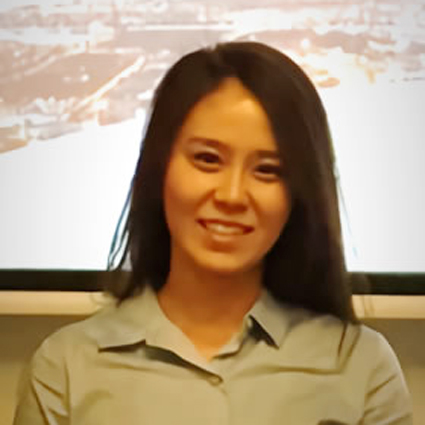
Juhee Park
PhD Candidate
Department of Industrial Engineering
Seoul National University
Juhee Park is a PhD candidate at the Department of Industrial Engineering of Seoul National University. Her interests in vehicle ergonomics stemmed from her undergraduate studies, when she participated in an experiment on occupant packaging study (determining the representative driving postures through the mock-up vehicle in relation to the seat, steering wheel, and gearshift position). She completed an internship with an automobile company as one of the affiliates of Hyundai Motors group, and was able to continue her research on human factors and intelligent transportation systems in collaboration with various industries in her graduate studies.
Her research interests are in designing of in-vehicle driver-assistance systems, that is, understanding of interactions between humans and vehicle systems. For example, issues about user safety, well-designed systems, optimizing human performance and system usability can be discussed in her research area.
Juhee has been conducting studies in automotive head-up displays (HUD) in particular, and has conducted two theoretical studies and one empirical study on the HUD display design and functional requirements analysis. One of the theoretical studies is currently under 2nd revision for publication in Applied Ergonomics, one of the top journals in the field of human factors, and another was presented at the Asian Conference on Ergonomics and Design, and will be submitted to the international journal in due course. The empirical study of interactive full-windshield HUD displays utilizing a driving simulator was presented at the international conference called the 19th Triennial Congress of the International Ergonomics Association in Melbourne, Australia.
Her research experience includes a variety of projects in addition to automobile-related research, which has helped her learn a wide range of ergonomic knowledge and skills. Recently, she has become interested in the attention and distraction issues in various driving situations, and will conduct some empirical research related to this topic. She hopes to continue working in the automotive industry and contribute to automotive research as a female engineer.
Despite the long history of automotive head-up displays (HUDs), what information they should display in different situations to best serve the driver remains unanswered. The lack of understanding hinders designing useful automotive HUD systems. As an effort to address this, the current study investigated the developer, researcher and user perspectives on the functional requirements of automotive HUD through literature review. The review results indicate that: 1) the existing commercial HUDs mostly intended to complement the conventional in-vehicle displays; 2) many recent research studies proposed HUD information for improving driver situation awareness and driving safety; 3) autonomous driving and other new technologies are giving rise to new HUD information; and 4) little research is currently available on HUD users' perceived information needs. Based on the review results, this study provides insights into the functional requirements of automotive HUDs and also suggests some future research directions for automotive HUD design.